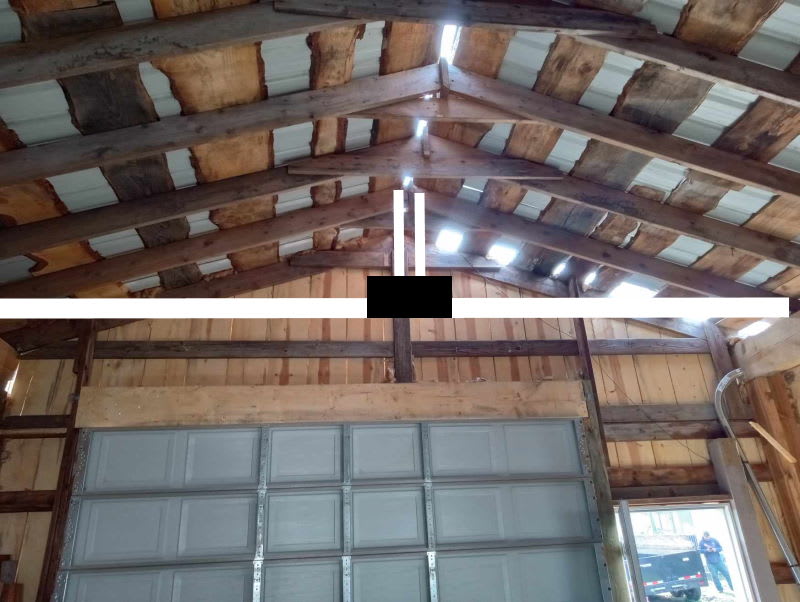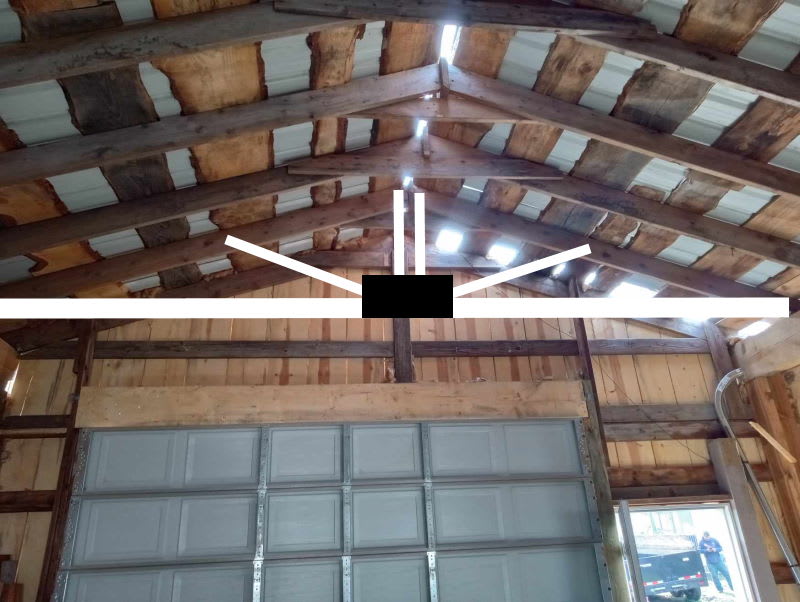Coast2Coast
Civil/Environmental
- Apr 1, 2024
- 4
I have client who needs to bring this roof structure up to code. He would rather add rafter ties than lift the roof and add a ridge beam (26 ft length - required a 3.5in by 16in deep LVL, which was a no-go for him). I just thought I'd post this here and see what you guys thought. I guess we will add some verticals and rafter ties and attempt to convert these into trusses, along with a few horizontals between the rafters. But this is nuts. He really needs to just rebuild, but that seems like a lazy engineering solution. Do you guys have anything to help with stability here? Picture is worth a 1000 words. The roof is 24 ft across, the current rafters are 2x8 at 24in o.c. Snow load is 35 psf, so we (with the ridge beam, treating these guys like bending members) were going to be sistering additional 2x8s as well. I don't think that is still necessary if they do have truss action. Slope is approx 3-4:12.


